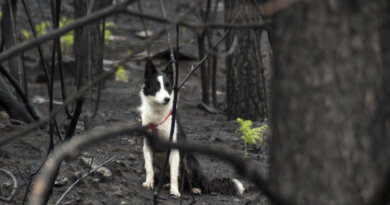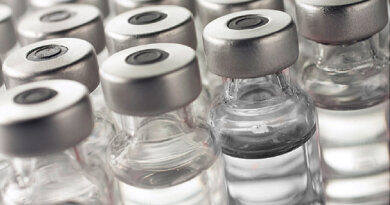Everything All of Us Might Want to Know about Labrador Retriever Shedding
It is that time of the year when Labrador parents have a shedding problem in their hands. Or if you are looking to add a lab into your family, you could be wondering whether the dog breed sheds. The truth is, labs are prolific shedders, thanks to a double coat.
With origins in cold regions, labs of all fur colors have a double coat to shield them from harsh and extreme outdoor weather conditions. Getting acquainted with their shedding tendencies is therefore the first step in maintaining your sanity as your dog starts leaving fur on furniture.
In this article, we will talk everything about Labrador retriever shedding, why the shedding occurs seasonally, and when to expect full blown regeneration of the inner coat. We will also include all available solutions of managing, but not stopping the shedding.
What Explains the Shedding in Labradors?
To survive swimming in the cold waters, these dog breeds developed a double coat with an under and top coat to regulate body temperature. Hence, twice in a year, your lab would shed one of the coats. The two coats serve specific functions, where the undercoat regulates body temperature. It is short and dense, helping a lab keep warm in winter.
In summer, this coat becomes thinner than before, allowing for air flow, hence keeping cool. The same coats also shield the skin from direct sunlight. On the other hand, the top coat is silky and waterproof. As a swimmer dog, the waterproof fur keeps the dog dry when it is cold or when they get into water. Acting as a natural wetsuit, this undercoat helps a lab stay dry.
How Frequently Do Labs Normally Shed?

Labradors, and to a large extent all double coated dog breeds shed a lot of hair. While the fur loss occurs menially all year long, it is noticeable during the molting season. For a period of between 2 and 3 weeks in spring, Labradors ready themselves for summer by shedding the thick coat they had in winter.
As a thinner, non-insulating coat develops, your best friend will shed more severely than before. Similarly, the process re-occurs in autumn as Labs change coats, in readiness for winter. The thin summer coat makes way for a thicker layer of fur in order to stay warm in winter.
Therefore, as a Lab owner, brace yourself to use the vacuum cleaner more often during these two periods for about 3 weeks a piece each. These periods of lighting and bulking up presents lots of pet fur to deal with, so you need to be prepared.
Labrador Shedding Solutions
First and foremost, you cannot stop what Mother Nature intends. The shedding process is a natural coping mechanism Labradors developed from their time in the wild. As a result, you cannot stop the process.
But what you can do is manage the severity of the shedding. The solution to Labrador retriever shedding is to manage the amount of fur present in your home on a daily basis through the implementation of a host of solutions.
1. Regular Brushing
The first step to minimizing the amount of shed fur in your home is to regularly brush your Lab. Brushing removes loose hair from the body, instead of the fur falling and congregating on your carpet, seats, car, and clothes.
Most of the time when you pick up a Labrador puppy, the breeder recommends that you brush the puppies daily with a right dog brush. Some go as far as giving you a brush for a start. The brushing is not only for removing loose fur, but also for getting the puppy used to handling.
Brushing also stimulates air flow within the fur, for a healthy skin. During the shedding season, you should brush your Lab for at least three times in a week. If you can brush them daily, the better. Some of the brushing equipment includes curry, pin, and a slicker brush.
The best way of brushing your Lab is to start from the neck or back, then brush in the direction in which his fur grows. The small loose hairs stick to the brush leaving the pup neat and clean. It is these fine fur that get logged onto surfaces on which the dog gets into contact.
Moreover, it is these fine fur that sheds throughout the year, and not only during the molting season. So, brushing your Lab regularly seems like a good idea. When brushing the Lab, take extreme caution when brushing the tummy area and legs.
The hair in these parts of the dog are thin and less dense compared to the other parts of the body. Too much brushing in these parts irritates the dog and also leaves the skin exposed to external elements such as sunburn.
2. Combing the Undercoat

Regardless of the coat color, Labs shed their undercoat in fall and spring. During this time, the undercoat fur falls off in the form of balls of fur that you come across all over the house. To minimize the frequency of ball fur, it is important to comb your canine friend once in a day.
The perfect tools for the job is a shed blade. However, the combing should only be done after brushing with either a curry or slicker brush. Firmly hold the shed blade and comb the coat, all the way to the undercoat. However, do not hold down the blade too hard to reach the pup skin.
Just as brushing, always comb in the direction of hair growth. This is the most effective way of getting as much loose hair as possible. Begin combing from either the neck or chest like when brushing and comb your way to his tail and rear.
Combing the belly is often discomforting to most Labs. They may react aggressively, if they are not used to being combed, therefore, don’t use the blade on the belly and lower legs. Moreover, these parts of the body are not densely coated, hence light brushing will remove any loosened hair.
Use any light comb or heavy-duty combing equipment such as a Furminator with caution. These are great for stripping dead hair with their blade-like gadgets. When using these, it is imperative that you don’t damage the undercoat or reveal pup skin. Exposed skin would leave your pet exposed to cold, heat, and sunburn, which they are vulnerable to.
3. Massaging Labs during Baths
Regularly bathing your Labrador has been proven to be another effective way of ridding the pup of dead hair. Throwing in a massage session does the trick of comforting the canine. And it is not a task that you have to do regularly. A once per week bath is deemed sufficient to control the shedding problem and generally guarantee healthy dog skin.
Bathing your dog once every week after brushing her further reduces the severity of shedding, provided you bath her correctly. Massaging the pup while giving her a bath serves to loosen and separate dead hair.
For better effect, use a shampoo and a rubber, silicone, or a bath mitt. These tools have bristle like protrusions that penetrate through the pup hair, reaching into dead hair and combing them out. Also, the protrusions produce the massage-like feeling on dogs, adding to the effectiveness of shedding solution.
After applying the shampoo (dog friendly), massage the pup all over with the bath mitts, to work out any stubborn hairs on the pooch. As you may have noticed, Labs do not curly, thick hair which easily tangles. As a result, you can massage their bodies without the fear of the hair snarling into painful tangles.
Use specialist shampoos and dog conditioners in order to prevent any skin irritations. Also, ensure you use only enough shampoo and conditions. And after the bath, completely rinse off the shampoo lather. Remnant could result in itchy, discomforting sensations. It is recommended that you rinse them twice to remove all the soap residue.
4. Health Reasons for Excessive Shedding
Although shedding is a natural process and is actually good for your dog, it’s a situation that’s not pleasant to have in your home. Also, while reasonable shedding is okay, there may be underlying health reasons causing excessive shedding.
When you notice that your pooch is shedding more hair than usual, then there could be health factors that need addressing. These include feeding the dog on low quality food, stressing agents, allergic reactions, thyroid conditions, and hormonal imbalances.
These conditions are serious and need urgent addressing by a qualified Vet as soon as you notice any changes in pooch behavior. Some of the indicators of poor health are constant itching or scratching on themselves.
The truth is, once your vet has addressed the health concerns, do not expect the shedding to end. However, you can look forward to a reduced amount of fur balls on your furniture, car, clothes, and upholstery.
Wrapping Up
Remember not to shave your Lab under any circumstance, even if the shedding is extreme, especially in summer. You might be tempted to do so, but keep in mind that it exposes your pooch to the environment as well as excessive heat. Shaving the Labs is, therefore, detrimental to their well-being as they need their double coat.
The post Everything All of Us Might Want to Know about Labrador Retriever Shedding appeared first on Hello Cute Pup.



